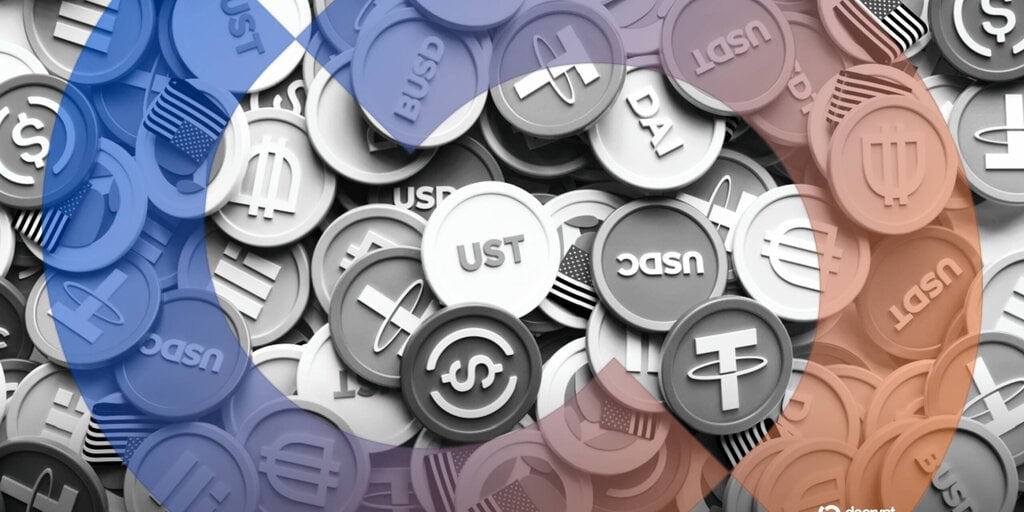In a groundbreaking shift for the financial landscape, major U.S. banks, including Bank of America and Citibank, are embarking on the development of stablecoins. This strategic move comes at a time when the demand for digital currencies is rising, fueled by increasing public interest and evolving regulatory environments. Bank of America CEO Brian Moynihan has emphasized that the bank is working on launching stablecoins, noting that they are exploring these initiatives while awaiting further clarity
Did You Know
The dot over an “i” is called a tittle.
?
AD
on regulatory matters.
The concept of stablecoins promises a new layer of reliability in digital transactions, as they are designed to maintain a constant value often pegged to fiat currencies. This feature could make them an attractive option for consumers wary of traditional cryptocurrencies' erratic nature. Citibank is also keenly focused on this trend, with executives discussing how stablecoins could challenge the dominance of the U.S. dollar, particularly in cross-border payments. This development could revolutionize how consumers engage with their finances, offering them greater security in an increasingly digital marketplace.
As Congressional discussions turn toward enabling legislation that would allow private companies to issue their own stablecoins, the path forward appears promising for these banking giants. However, the industry remains cognizant of the regulatory hurdles that accompany such innovations. As major institutions prepare to integrate stablecoins into their offerings, they underscore a dual commitment to embracing groundbreaking technology while navigating the complexities of compliance and client demand. The launch of stablecoins could herald a new era in banking, blending technological innovation with the reliability that consumers seek.
Q&A (Auto-generated by AI)
What are stablecoins and how do they work?
Stablecoins are a type of cryptocurrency designed to maintain a stable value by pegging them to a reserve of assets, such as fiat currencies like the US dollar or commodities. This stability makes them less volatile compared to traditional cryptocurrencies like Bitcoin. Stablecoins facilitate transactions and serve as a bridge between fiat and digital currencies, allowing users to transact with less risk of price fluctuations.
How do interest rate cuts affect the economy?
Interest rate cuts typically lower borrowing costs, encouraging consumers and businesses to take loans for spending and investment. This can stimulate economic growth by increasing demand for goods and services. However, if the economy is already strong, excessive rate cuts can lead to inflation. The Federal Reserve's decisions on interest rates, like those anticipated by Bank of America, directly influence economic conditions and market behavior.
What regulatory challenges do stablecoins face?
Stablecoins face significant regulatory challenges, particularly concerning how they are classified and governed. Regulatory bodies are concerned about consumer protection, financial stability, and potential misuse in money laundering or fraud. The lack of clear, unified regulations can hinder innovation and adoption. As mentioned by Bank of America’s CEO, legal clarity is essential for banks to confidently explore stablecoin initiatives.
How are banks adapting to cryptocurrency trends?
Banks are increasingly exploring cryptocurrency and stablecoin initiatives to stay competitive in a rapidly evolving financial landscape. Institutions like Bank of America and Citibank are assessing client demand and regulatory environments to launch their own stablecoins. This adaptation includes investing in blockchain technology and developing products that integrate digital currencies, reflecting a shift towards a more digital-centric banking model.
What impact could stablecoins have on payments?
Stablecoins have the potential to revolutionize payment systems by enabling faster, cheaper, and more efficient transactions, both domestically and internationally. They can facilitate cross-border payments without the need for currency conversion, reducing transaction fees and processing times. This could enhance financial inclusion by providing easier access to digital payment systems, especially in underbanked regions.

:max_bytes(150000):strip_icc()/GettyImages-2224572073-090893abb9714bbd923d35508ca7f365.jpg)












